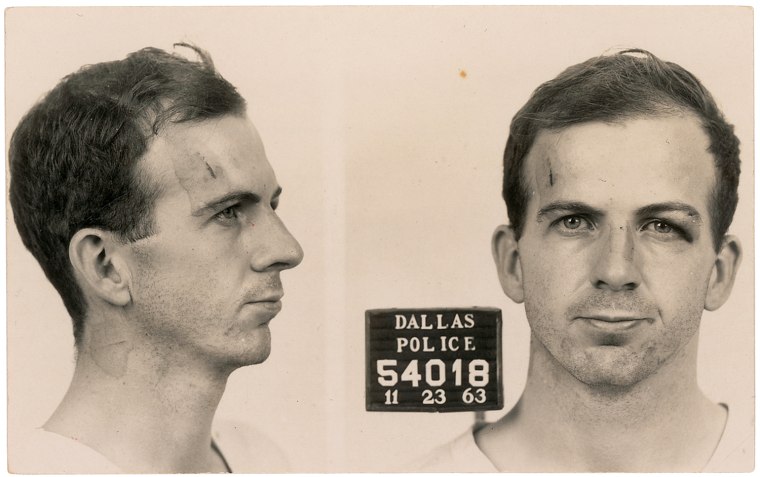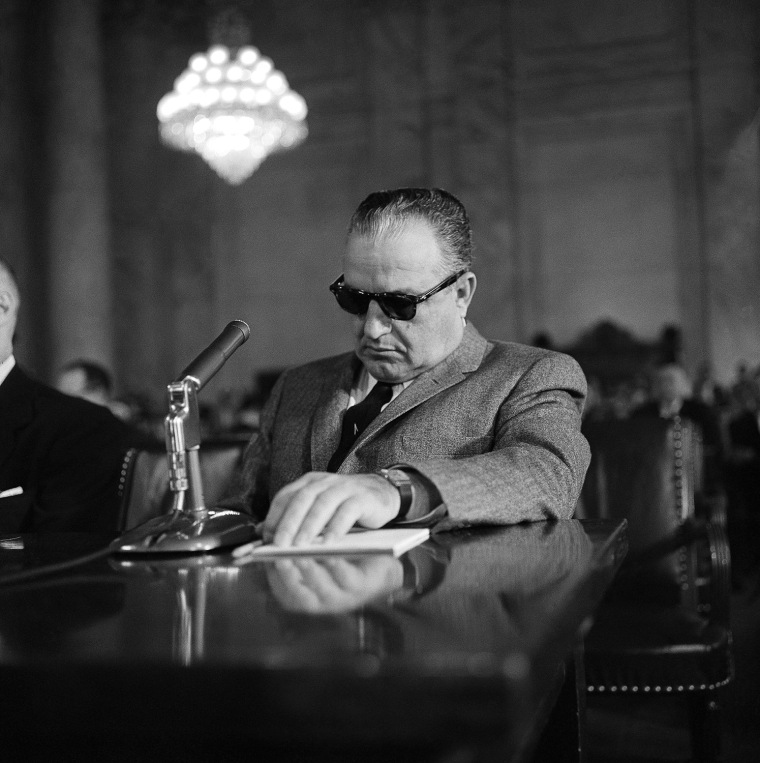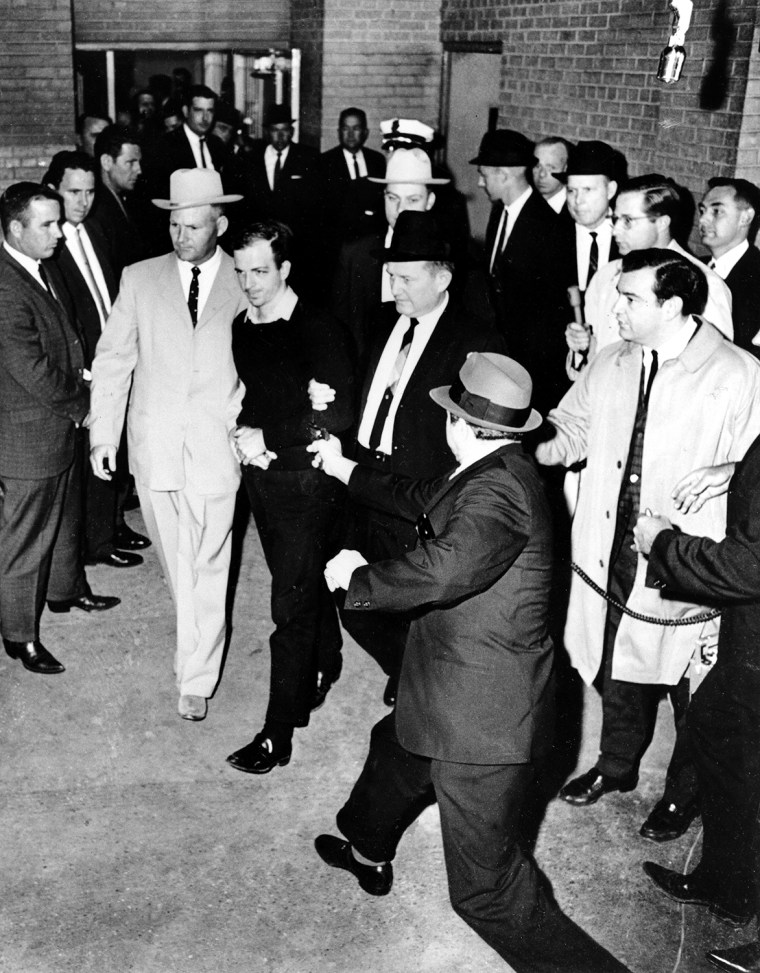
The mob did it. Or the CIA. Or Fidel Castro. Or Lyndon Johnson. Or the Soviets.
Half a century has passed since the assassination of President John F. Kennedy — one of the greatest crimes of the 20th century and the most abundant wellspring for conspiracy theorists in the history of the United States.
Polls consistently show that a clear majority of Americans believe that Lee Harvey Oswald did not act alone, and perhaps did not act at all, in the murder of the 35th president on a Dallas street on Nov. 22, 1963.
That's many more than those who believe the discredited theories that the Sept. 11 attacks were an inside job and that President Barack Obama was born outside the country and faked his birth certificate.
Part of the lure for conspiracy theorists is the irresistible concentration of power that surrounded the crime — held by both the gleaming young president and the forces, from the Kremlin to within his very administration, that would have had a motive.
But another part, say those who have studied the assassination and the conspiracy theories for decades, is the smallness of Oswald himself, the man blamed by the Warren Commission, the government’s first inquiry into the killing.
“It’s incredibly unsatisfying to believe that this guy, this insignificant person, could have done so consequential an act,” says Jeff Greenfield, who worked for Robert F. Kennedy and just released a book imagining how history might have played out had JFK lived.
INTERACTIVE: ‘Everything changed’: Remembering JFK, 50 years past
The Warren Commission concluded that Oswald acted alone, but it was not the final word on the assassination.
A special House committee found in 1979 that Kennedy “was probably assassinated as the result of conspiracy” but was unable to identify another gunman or the extent of the plot.
Philip Shenon, a former reporter for The New York Times and author of a new book on the assassination, “A Cruel and Shocking Act,” blames four men for spawning “conspiracy theories that are likely to plague us forever.”
Among those faulted by Shenon is the slain president’s brother, Robert F. Kennedy, for publicly supporting the Warren Commission’s findings and denouncing the commission in private.
Shenon’s book finds gaping holes in the government’s investigation. It suggests that the FBI and CIA covered up what they knew about Oswald, and that former Chief Justice Earl Warren never allowed the commission staff to see the JFK autopsy photos.
WATCH: NBC News archive video on the Kennedy legacy
A Gallup poll, timed for the 50th anniversary of the murder in Dallas, found that 61 percent of Americans believe in a conspiracy to kill Kennedy, with the Mafia and the U.S. government the most popular culprits.
That figure is down from 81 percent in the early 1990s, after the controversial Oliver Stone film “JFK” fueled belief in a conspiracy, but has never, since the year of the assassination itself, dipped below half.
“All of us have had a history teacher in high school, a professor, who swore there was a conspiracy,” says Joe Uscinski, a political scientist at the University of Miami and co-author of the forthcoming book “American Conspiracy Theories.”
“Even if it’s a stretch to call it truth, there’s still an information environment that would suggest to a reasonable person there might have been,” he says.
Among those people are Secretary of State John Kerry, who told NBC News that “to this day I have serious doubts that Lee Harvey Oswald acted alone.” He declined, on “Meet the Press” last week, to elaborate beyond saying "it’s a point of view that I have.”
NBC News has examined the conspiracy theories that live on, as vividly and persistently as the president’s memory — beginning with one of the most popular.
Carlos Marcello and the mob theory
Finding a reason for organized crime to have plotted Kennedy’s assassination is not difficult: Both John F. Kennedy and his brother Robert, the attorney general, were crusading mob-busters, and led the toughest crackdown on the Mafia to date by the federal government.

The 1979 House report concluded that organized crime “had the motive, opportunity and means to kill the president.” It singled out Carlos Marcello, a mob boss whose territory included Louisiana, most of Texas and part of Mississippi.
Mob prosecutions soared under Robert Kennedy’s Justice Department, and Marcello was deported to Guatemala in 1961. There he is said to have slogged through the jungle in Gucci shoes, swearing he would get revenge. He was tried two years later in a New Orleans mob case and acquitted — on the afternoon of Nov. 22, 1963 — after apparently bribing a juror.
“He was incredibly powerful. He was probably America’s most powerful godfather then,” says Lamar Waldron, the author of a new book that makes a comprehensive case for a mob plot. “Marcello controlled an empire at least as large as General Motors.”
Waldron’s book includes an FBI account of a confession made by Marcello, from federal prison in Texas, to a cellmate and FBI informant in December 1985: “Yeah, I had the son of a bitch killed. I’m glad I did. I’m sorry I couldn’t have done it myself.”
The book establishes Oswald as little more than a fall guy — working as a low-level American intelligence operative and answering to people whose true allegiance was to Marcello.
Marcello and his subordinates, Waldron argues, manipulated Oswald into a connection with a plan by John and Robert Kennedy to stage a coup against Castro on Dec. 1, 1963. The Mafia had learned of the plan because of the CIA’s unauthorized use of the mob in plots, unknown to President Kennedy, to kill Castro, Waldron says.
Once Oswald was publicly identified as the suspect in the assassination of Kennedy, the CIA and other agencies had to cover up information, lest the Castro plot be exposed and, in Waldron’s words, “start World War III.”
The Mafia had learned that “unless you have someone to quickly take the blame, someone will put it where it belongs,” Waldron says.
In Waldron’s account of Nov. 22, 1963, Marcello had arranged for two hit men to enter the country from Europe through Canada and carry out the assassination. Their identities, and from where they fired, remain unknown, Waldron says, partly because the FBI stands by the theory of Oswald as the lone gunman and has never released the tapes of Marcello’s prison conversations with the FBI informant.
Marcello died in 1993.
The 1979 House report found that the Warren Commission’s investigation was “seriously flawed,” and that its determination that there was no conspiracy was “not reliable.”
Among other things, the House committee said, the Warren Commission failed to uncover associations between Oswald and Jack Ruby, the man who shot him to death two days after Kennedy was killed.

The House committee found “credible associations relating both Lee Harvey Oswald and Jack Ruby to figures having a relationship, albeit tenuous, with Marcello’s crime family or organization.”
The mob theory holds that Ruby was ordered by the mob to take out Oswald to prevent him from talking.
Waldron last week petitioned the White House to order the release of all assassination-related files by the FBI, the CIA and other government agencies. The National Archives, the petition says, refuses to say how many pages of files are being withheld.
Kerry told Parade magazine last week that “after a certain period of time, and that period of time may well have passed, it is totally appropriate for a country like the United States to open up the the files on whatever history can … shed light on.”
“I think that everybody would benefit,” he said.
Evan Burgos of NBC News contributed to this report.